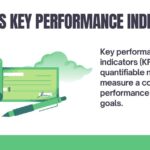The Average True Range (ATR) is a technical indicator used in trading to measure market volatility. Developed by J. Welles Wilder Jr. in 1978, ATR helps traders understand how much an asset typically moves in a given time period. Unlike trend indicators, ATR does not indicate price direction but rather how much the price fluctuates.
ATR is widely used in stocks, forex, and commodities trading to set stop-loss levels, assess risk, and adjust position sizes based on market conditions.
Key Takeaways
- ATR measures market volatility but does not indicate trend direction.
- A high ATR means greater price fluctuations, while a low ATR suggests stability.
- Traders use ATR to set stop-loss levels and manage risk effectively.
- Example: A trader using ATR to set a stop-loss places it further away in a high-volatility market to avoid getting stopped out too soon.
How ATR is Calculated
ATR is derived from the True Range (TR), which is calculated as:
- Current High – Current Low
- Current High – Previous Close
- Current Low – Previous Close
The largest value among these three is the True Range (TR).
The ATR is then calculated as the moving average of the True Range over a selected period (typically 14 days). The formula is:ATR=(PreviousATR×(n−1))+CurrentTRnATR = \frac{(Previous ATR \times (n – 1)) + Current TR}{n}ATR=n(PreviousATR×(n−1))+CurrentTR
where n is the number of periods (e.g., 14 days).
Interpreting ATR in Trading
- High ATR: Indicates high volatility, often seen in markets experiencing breakouts, news-driven moves, or uncertain conditions.
- Low ATR: Suggests lower volatility, which occurs during consolidations or stable trends.
Example: If a stock’s ATR is $2.50, it means the stock typically moves $2.50 per day. A trader expecting a larger move might adjust position sizes accordingly.
Using ATR for Stop-Loss and Risk Management
ATR helps traders determine logical stop-loss levels to avoid premature exits.
- ATR-Based Stop-Loss: Traders multiply ATR by a factor (e.g., 1.5x ATR) to set stop-losses further away in volatile markets.
- Position Sizing: Traders adjust trade size based on ATR—smaller positions in high-volatility markets, larger in low-volatility markets.
Example: If a forex trader sets a stop-loss 2x ATR, and ATR is 50 pips, the stop-loss would be 100 pips away from entry.
ATR vs. Other Volatility Indicators
| Indicator | Purpose | Strengths | Limitations |
|---|---|---|---|
| ATR | Measures volatility | Simple and widely used | Does not indicate trend direction |
| Bollinger Bands | Identifies overbought/oversold conditions | Visually intuitive | Can give false signals |
| Standard Deviation | Measures price dispersion | Statistically accurate | Complex to interpret |
Challenges and Limitations of ATR
- No Trend Direction: ATR does not show if the price will go up or down.
- Lagging Indicator: ATR is based on past data, which may not predict future moves accurately.
- Market-Specific Use: ATR settings must be adjusted for different assets (stocks, forex, commodities).
Example of ATR in Action
A stock trader notices that ATR has increased sharply in a tech stock after an earnings report. They adjust their stop-loss further away to avoid being stopped out by short-term price swings while still managing risk effectively.
Future of ATR in Trading
With the rise of automated trading and AI-driven strategies, ATR remains a key tool for risk management. Many trading algorithms now incorporate ATR-based dynamic stop-loss levels to optimize trade execution.





